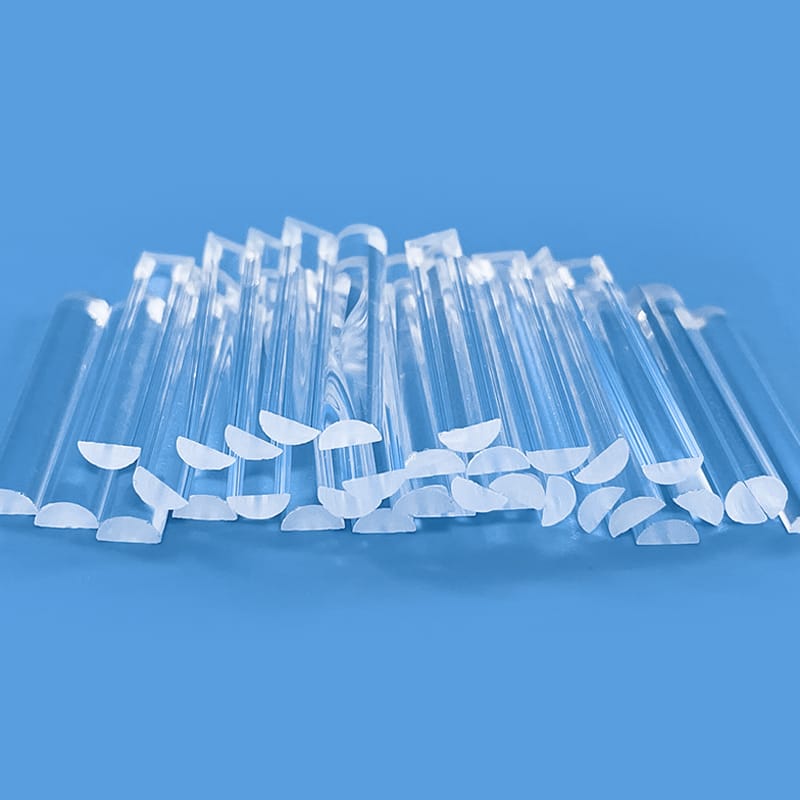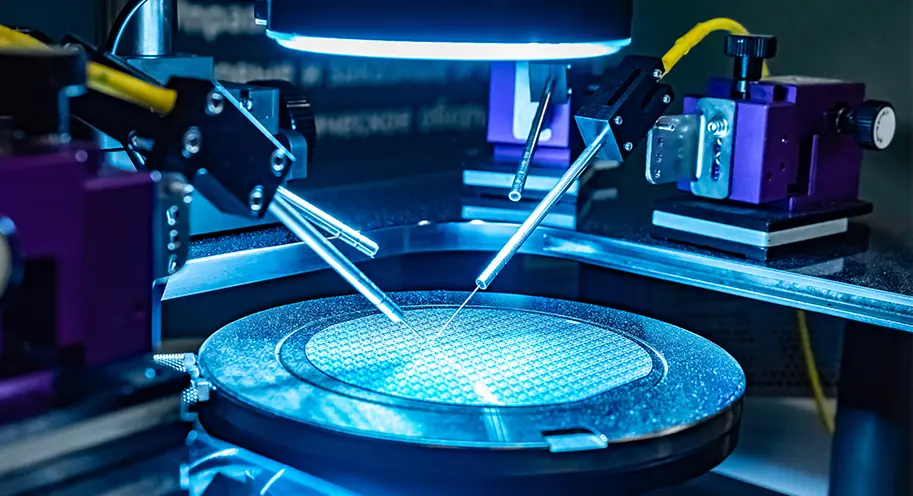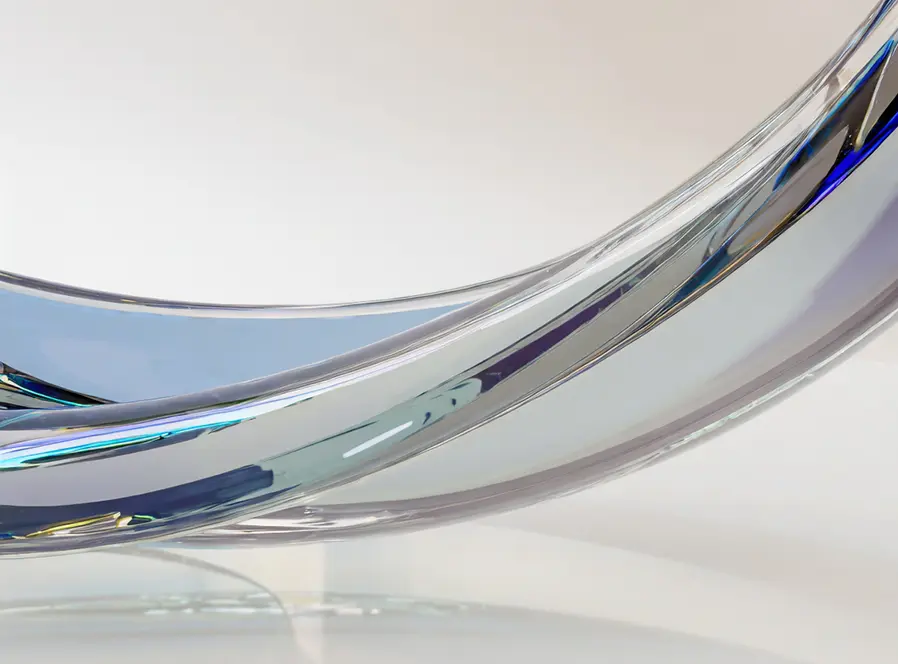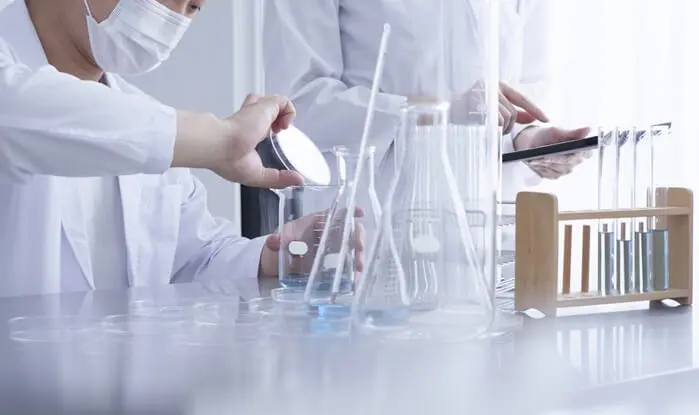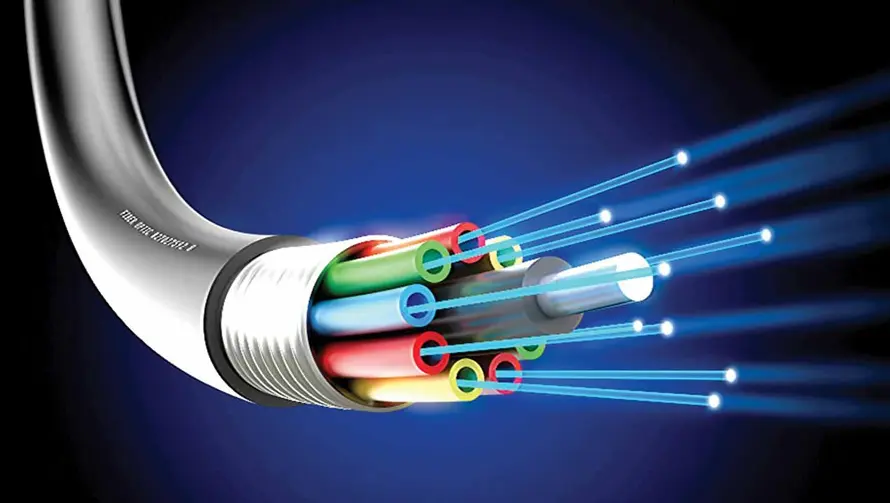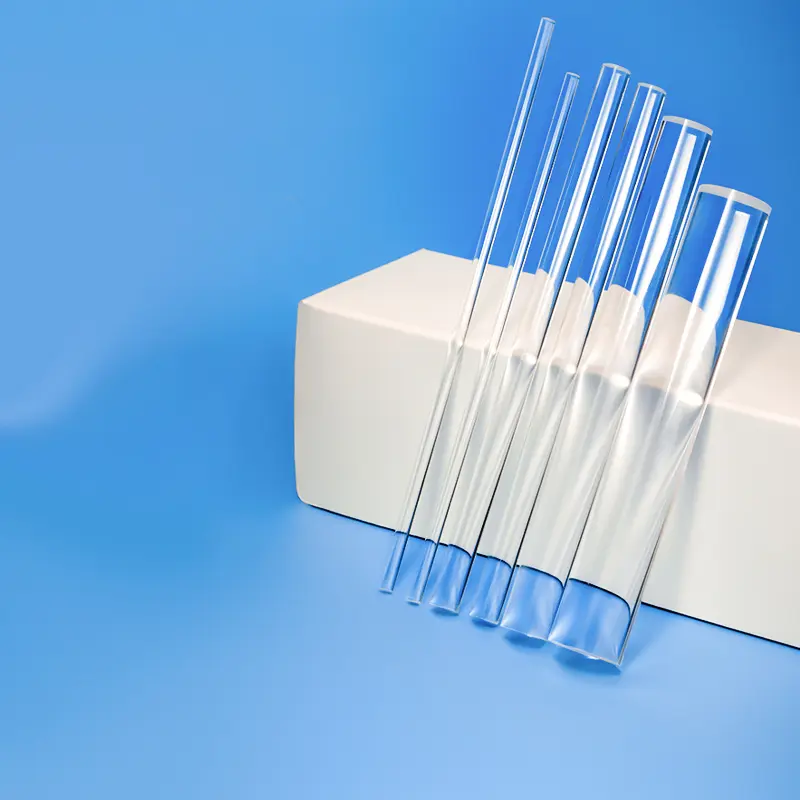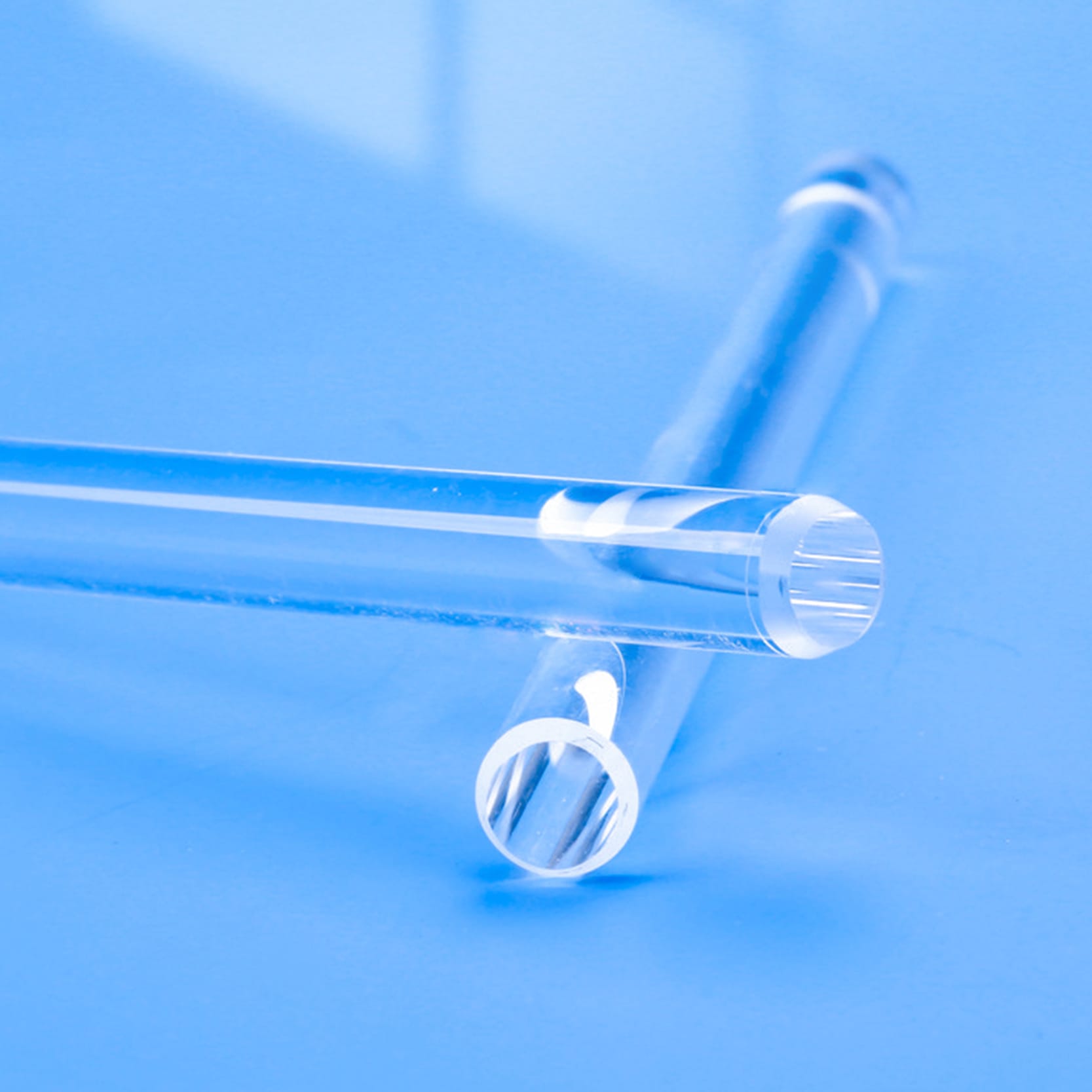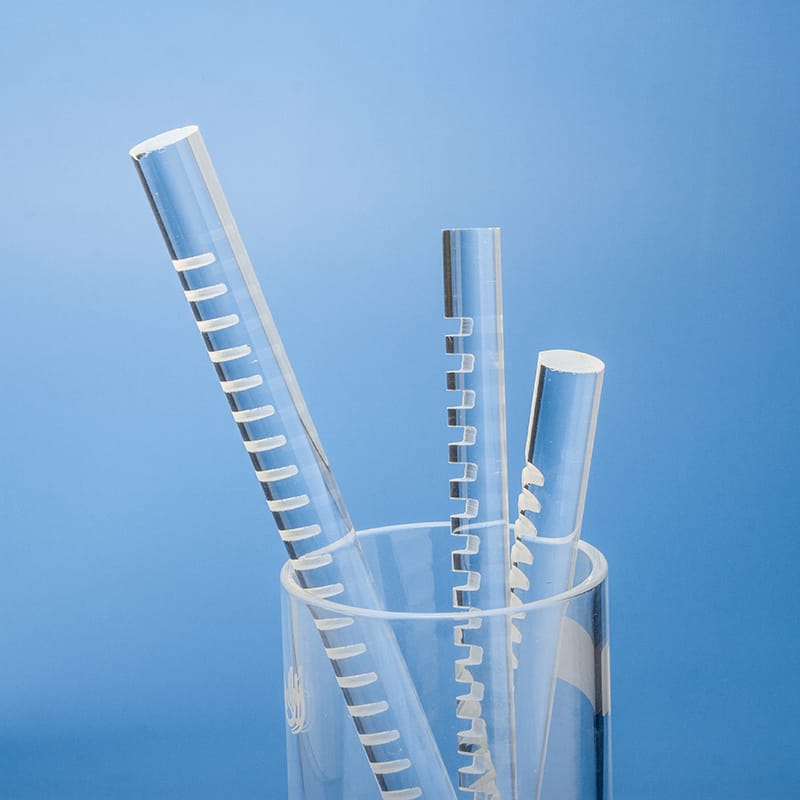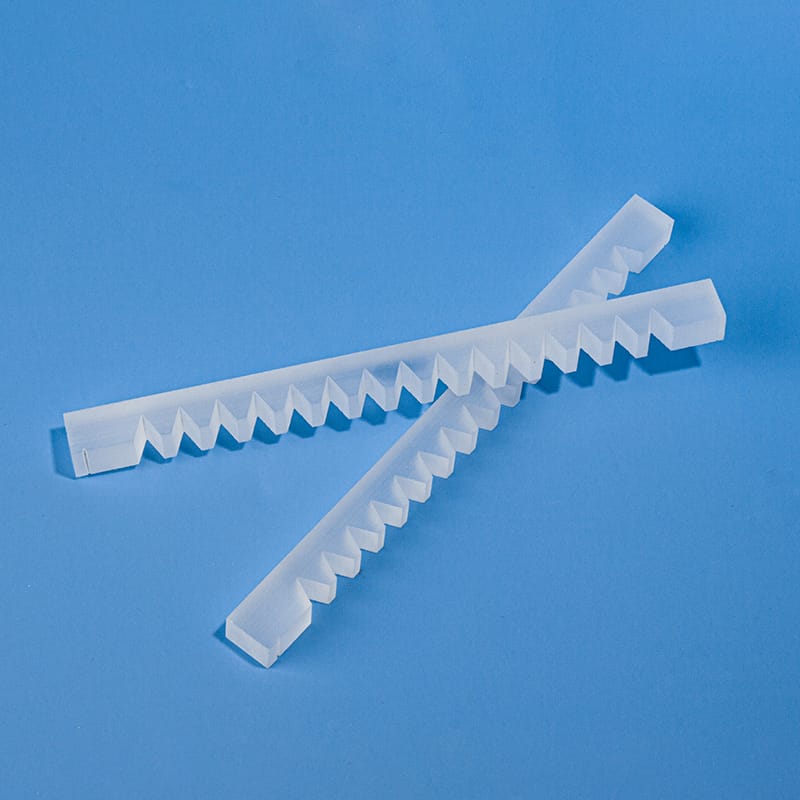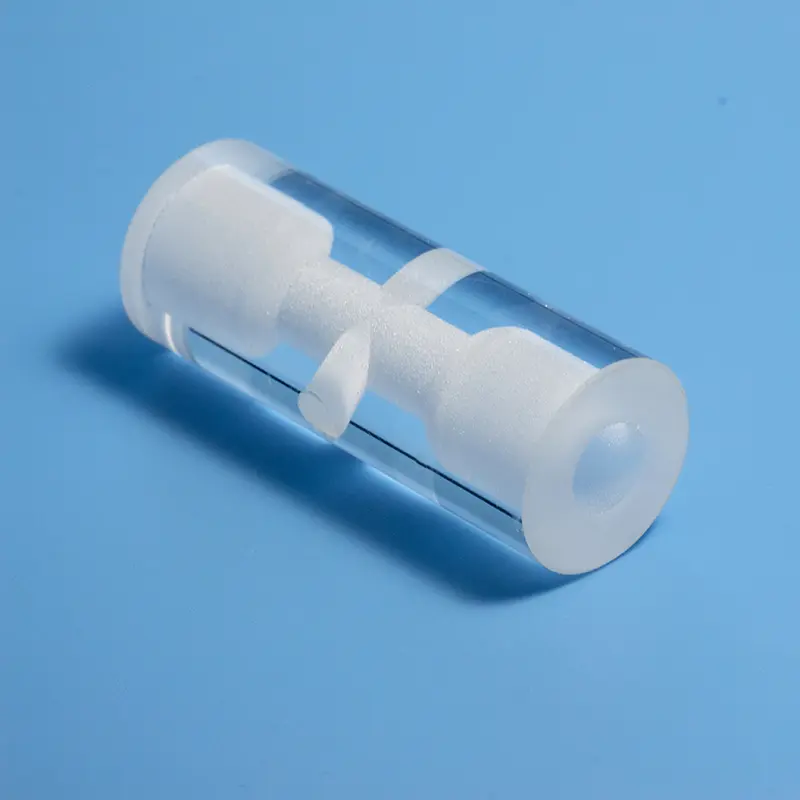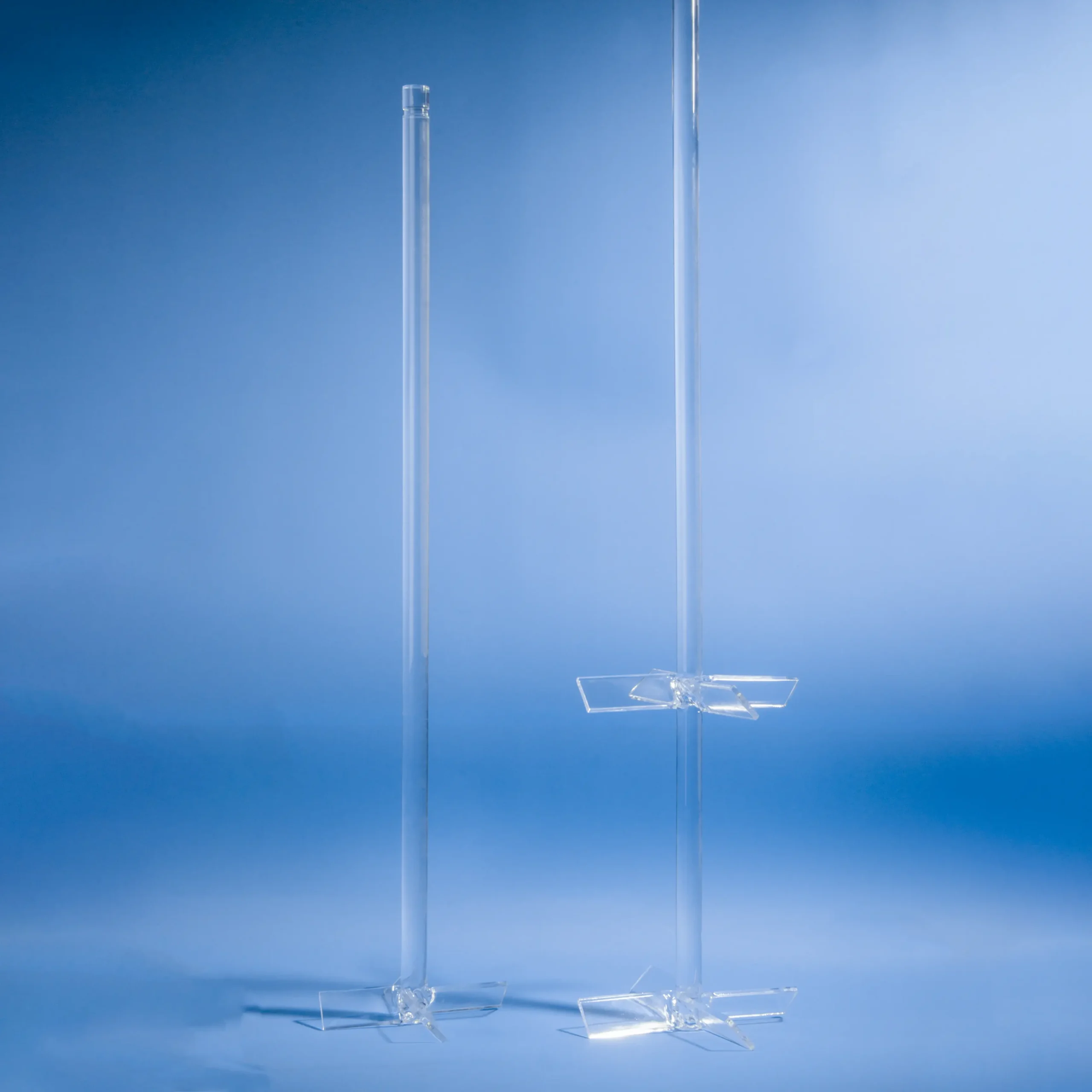Our high-purity quartz semi-round rods and fused silica half-round bars offer exceptional thermal stability, chemical resistance, and optical clarity. Ideal for semiconductor, optical, and high-temperature industrial applications, these precision components are available with custom dimensions.
| diameter | length |
|---|---|
| 10mm | 300mm |
| 10mm | 600mm |
| 12mm | 300mm |
| 12mm | 600mm |
| 14mm | 300mm |
| 14mm | 600mm |
| 15mm | 300mm |
| 15mm | 600mm |
| 15mm | 1000mm |
| 16mm | 300mm |
| 16mm | 600mm |
| 16mm | 1000mm |
| 16mm | 1200mm |
| 18mm | 300mm |
| 18mm | 600mm |
| 18mm | 1000mm |
| 18mm | 1200mm |
| 20mm | 300mm |
| 20mm | 600mm |
| 20mm | 1000mm |
| 20mm | 1200mm |
| 22mm | 300mm |
| 22mm | 600mm |
| 22mm | 1000mm |
| 22mm | 1200mm |
| 25mm | 300mm |
| 25mm | 600mm |
| 25mm | 1000mm |
| 25mm | 1200mm |
| 28mm | 300mm |
| 28mm | 600mm |
| 28mm | 1000mm |
| 28mm | 1200mm |
| 30mm | 300mm |
| 30mm | 600mm |
| 30mm | 1000mm |
| 30mm | 1200mm |
| 32mm | 300mm |
| 32mm | 600mm |
| 32mm | 1000mm |
| 32mm | 1200mm |
| 35mm | 300mm |
| 35mm | 600mm |
| 35mm | 1000mm |
| 35mm | 1200mm |
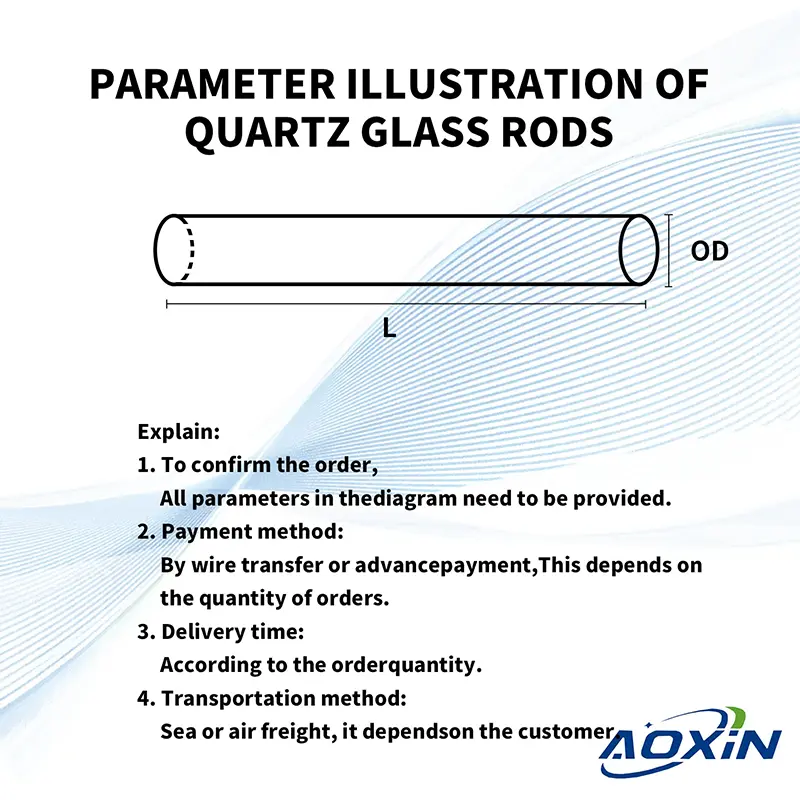
Remarks:
To confirm the order,
the following parameters are required:
① outer diameter ② length ③ quantity
- Payment method:
By T/T or prepayment,
It depends on the quantity of the order. - Delivery time:
According to the order quantity. - Shipping method:
By sea or by air,
It depends on the customer.
| Property Content | Property Values |
|---|---|
| SiO2 | 99.99% |
| Density | 2.2×10³ kg/cm³ |
| Hardness | 5.5 - 6.5 Mohs' Scale 570 KHN 100 |
| Tensile Strength | 4.8×10⁷ Pa (N/mm2) (7000 psi) |
| Compression Strength | >1.1×10⁹ Pa (160,000 psi) |
| Coefficient of Thermal Expansion | 5.5×10⁻⁷ cm/cm·°C (20°C-320°C) |
| Thermal Conductivity | 1.4 W/m·°C |
| Specific Heat | 670 J/kg·°C |
| Softening Point | 1730°C (3146°F) |
| Annealing Point | 1210°C (2210°F) |
| Strain Point | 1120°C (2048°F) |
| Work Temperature | 1200°C (2192°F) |
| Electrical Resistivity | 7×10⁷ ohm cm (350°C) |
| Size | Customized |
| Logo | Customized Logo Accept |
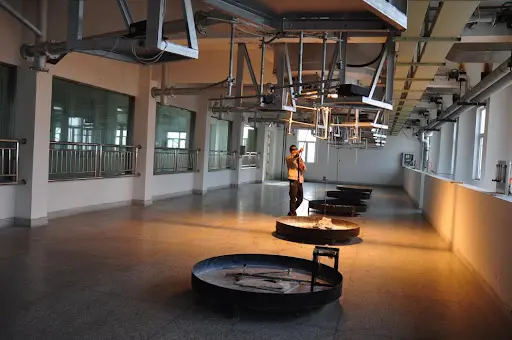
There are two primary methods for producing quartz rods: the continuous method and the flame fusion method (also known as the gas fusion method).
Continuous Method: In this method, quartz sand is fed from the top into a furnace, which comprises a metallic quartz crucible surrounded by electric heating elements. The quartz sand melts at high temperatures. The molten material then passes through a shaping orifice at the bottom of the crucible, producing rods, tubes, sheets, or other various specified product forms.
Flame Fusion Method: This method involves using hydrogen and oxygen to melt colorless quartz crystal. The molten material is formed into quartz glass through the melting and congealing of crystalline particles in the flame. The quartz glass is then removed from the flame through different methods and processed into quartz rods of the desired shape.
High Purity
The primary component of quartz semi-circular rods is silicon dioxide (SiO2), resulting in high purity. This characteristic makes them crucial in applications requiring high-purity materials, such as semiconductor manufacturing.
High-Temperature Resistance
Quartz semi-circular rods can withstand high-temperature environments without deformation or melting, making them excellent for applications in heat treatment and high-temperature furnaces.
Corrosion Resistance
These rods demonstrate excellent corrosion resistance to a variety of chemical substances, maintaining stability in harsh chemical environments.
Excellent Optical Properties
Quartz semi-circular rods possess superior optical properties, including high transparency and low light absorption, making them well-suited for applications in optical communication and spectroscopic analysis.
Application Scenario
Semiconductor Manufacturing
Quartz semi-circular rods are used in semiconductor manufacturing as precision components or tools in wafer processing equipment, photolithography equipment, and other semiconductor process tools. They help ensure precise wafer processing and positioning.
In various semiconductor processes like cleaning, oxidation, photolithography, etching, and diffusion, quartz semi-circular rods may act as carriers or auxiliary tools to ensure process stability and precision.
Optical Instruments
Quartz semi-circular rods are used in the manufacturing of optical instruments as a substrate for optical components such as lenses and prisms. Their excellent optical properties enable light refraction, reflection, and beam splitting.
They also play an important role in optical equipment like spectrometers and thermal imagers.
Laboratory and Scientific Research
In laboratories, quartz semi-circular rods are often used in chemical experiments and spectroscopic analysis as stirring rods or reaction vessel components due to their chemical stability and inertness to most chemical substances.
In scientific research, they are used in high-precision measurement and analysis instruments to ensure the accuracy and reliability of experimental results.
Other Fields
Quartz semi-circular rods are used to make mechanical parts like pressure gauges and high-precision instruments used in high-temperature and high-pressure environments.
In optical fiber communication, they may be a part of the optical fiber preform, which is processed into optical fibers through specific techniques.
The manufacturing process of quartz rods primarily involves melting quartz sand into hollow quartz preforms using a plasma flame. These preforms are then mechanically cold-worked into thick-walled quartz tubes. Finally, a medium-frequency induction heating non-contact secondary shaping technology is used to produce the quartz rods. This meticulous process ensures the quartz rods possess high purity, low hydroxyl content, high dimensional accuracy, and a superior surface finish free of defects.
In the electronics industry, quartz rods are primarily utilized as substrates for semiconductor materials and as bases for electronic components. Their excellent electrical insulation and thermal stability make them ideal for use in high-frequency circuits and sensors, as well as other high-precision electronic devices. Quartz rods are also crucial for the production of photomasks and glass chips, which are vital for enhancing electronic device performance.
Quartz rods exhibit an extremely low coefficient of thermal expansion and excellent resistance to thermal shock.
Frequently asked questions
We specialize in the end-to-end manufacturing of high-purity quartz glass components. Our core product lines include:
Quartz Tubing & Rods: A wide range of diameters and specifications.
Quartz Plates & Discs: Precision-cut and polished for optical and industrial use.
Quartz Labware: A full suite of standard and custom glassware, including beakers, flasks, and boats.
Semiconductor-Grade Quartz: High-purity components like process tubes and carriers for semiconductor fabrication.
Custom Fabricated Components: We can produce complex parts tailored to your unique designs and specifications.
Yes. Custom fabrication is at the core of our business. With over a decade of specialized experience, we partner with companies to provide expert OEM/ODM services. Our capabilities include welding, grinding, drilling, polishing, bending, and other precision processing techniques to create components that meet your exact requirements.
Quality is paramount in our manufacturing process. We are an ISO 9001:2015 certified manufacturer, ensuring that our processes meet international quality management standards.Our products also undergo rigorous SGS testing for purity and performance. We use high-purity raw materials (up to 99.998% SiO2) to produce fused quartz and fused silica products with exceptional thermal stability, high-temperature resistance, and chemical inertness.
We've streamlined our process to be as efficient as possible:
Submit Your RFQ: Send us your technical drawings, specifications, and requirements via our website contact form or email.
Rapid Response: You can expect an initial response within minutes and detailed communication within half an hour.
Design & Proposal: We will deliver a detailed design proposal and a competitive quote within 24 hours.
Prototyping & Production: Upon approval, we move swiftly from prototyping to full-scale production to meet your deadlines.
Partnering with Aoxin Quartz offers several key advantages:
Proven Expertise: With 10+ years in the industry, we have the technical knowledge to tackle complex challenges.
One-Stop Solution: We manage the entire production process, from sourcing high-purity raw materials to fabricating and finishing complex components.
Competitive Value: Located in a major quartz production hub, we leverage an efficient supply chain and advanced manufacturing to offer exceptional quality at a competitive price point.
Dedicated Partnership: Over 90% of our clients become long-term partners. We are committed to your success through responsive service, reliable quality, and innovative solutions.

